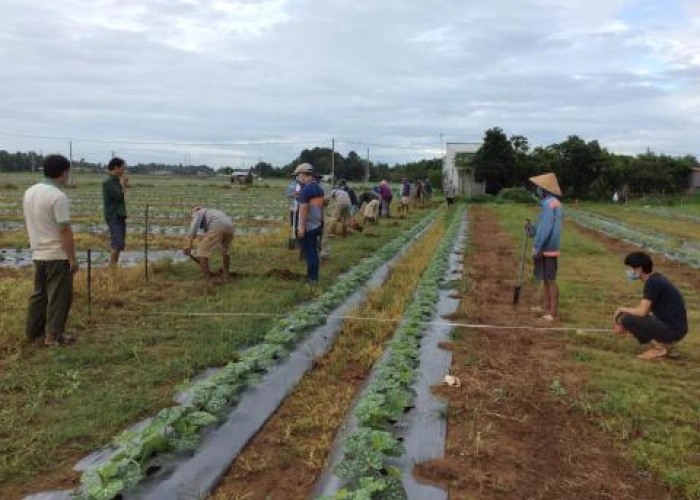Aquifer storage and recovery systems in the Mekong Delta

Adapted from the project website
Freshwater Availability in the Mekong Delta (FAME) is a collaborative, multiphase project focusing on scoping, piloting and providing upscaling advice to national partners in Vietnam on how and where to improve the freshwater availability during (very) dry seasons for agricultural purposes on a farmer-scale by using the subsurface via shallow Aquifer Storage and Recovery (ASR) systems.
The project is funded by Netherlands Enterprise Agency (RVO) and is a part of the Partners for Water program. Partners of the project are: Deltares, Division for Water Resources Planning and Investigation for the South of Viet Nam (DWRPIS), the Center of Water Management and Climate Change, of the Vietnam National University – Ho Chi Min (WACC), Wageningen University & Research (WUR), Nelen & Schuurmans, and Royal HaskoningDHV.
ASR systems provide the opportunity to recharge permeable groundwater systems (aquifers) by infiltrating or injecting rain and/or fresh surface water into the subsurface. Based on hydro(geo)logical and water management characteristics in the Mekong Delta, the so-called creek ridge infiltration technique or the shallow ASR system is promising. This system pumps or infiltrates freshwater into the sandy subsurface during the end of the wet season (between October and November) before the salinity in the surface water starts to increase. As such, the fresh groundwater volume increases, and thus, more freshwater is available during the dry season.
Three potential ASR field sites in the Ben Tre and Tra Vinh provinces of the Mekong Delta, Vietnam have been studied by students during intensive field work. Based on several selection criteria, a site in the province of Tra Vinh was chosen. There a pilot was installed at the Long Son Commune, at an extensive sand-dune complex. This site is also part of an AMD / IFAD funded project. On October 2021, five infiltration pipes of 30 meters were placed horizontally 1 m below the surface, while 4 monitoring wells with divers and 1 monitoring well with CTD were installed. Freshwater was taken from the nearby reservoir and infiltrated through the five infiltration pipes, using a solar pump.
Regarding the upscaling, the potentiality map shows that at least 16,000 ha of sand dunes are suitable for the implementation of shallow ASR systems, and that 5-25% of the agricultural water demand could be covered with water stored through shallow ASR systems. With the objective to understand further the feasibility of these systems and their potential to be embedded in the water management framework, we recommend further analysis of the current pilot results and of other potential pilots.